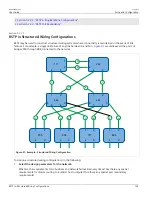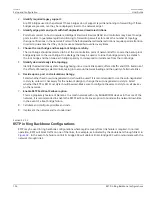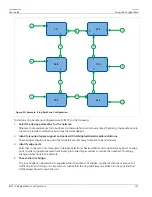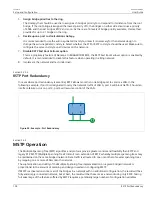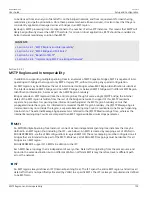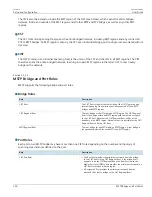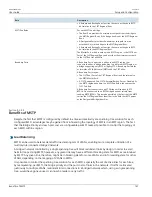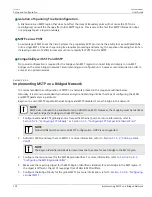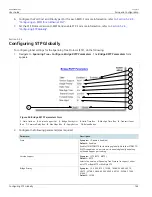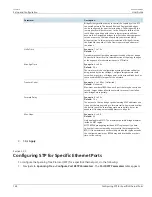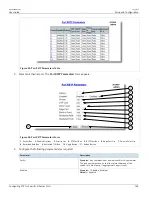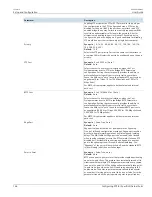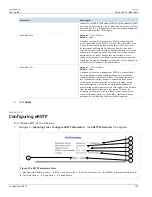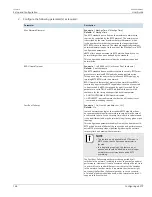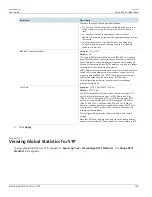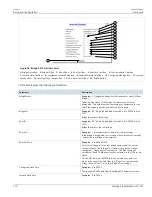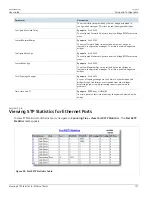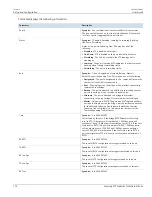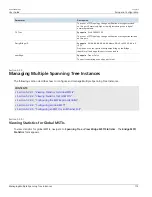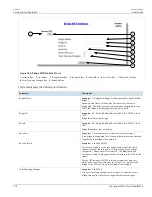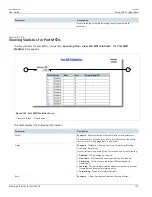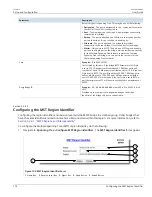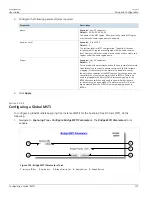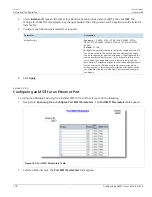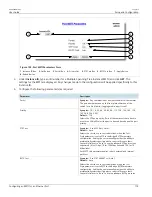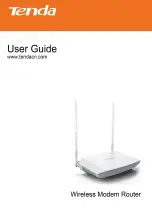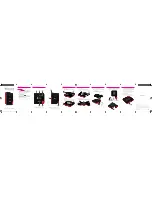
Chapter 5
Setup and Configuration
RUGGEDCOM ROS
User Guide
164
Configuring STP for Specific Ethernet Ports
Parameter
Description
Bridge Priority provides a way to control the topology of the STP
connected network. The desired Root and Designated bridges
can be configured for a particular topology. The bridge with the
lowest priority will become root. In the event of a failure of the
root bridge, the bridge with the next lowest priority will then
become root. Designated bridges that (for redundancy purposes)
service a common LAN also use priority to determine which
bridge is active. In this way careful selection of Bridge Priorities
can establish the path of traffic flows in normal and abnormal
conditions.
Hello Time
Synopsis:
1 to 10 s
Default:
2 s
Time between configuration messages issued by the root bridge.
Shorter hello times result in faster detection of topology changes
at the expense of moderate increases in STP traffic.
Max Age Time
Synopsis:
6 to 40 s
Default:
20 s
The time for which a configuration message remains valid after
being issued by the root bridge. Configure this parameter with
care when many tiers of bridges exist, or slow speed links (such as
those used in WANs) are part of the network
Transmit Count
Synopsis:
3 to 100 or { Unlimited }
Default:
Unlimited
Maximum number of BPDUs on each port that may be sent in one
second. Larger values allow the network to recover from failed
links/bridges more quickly.
Forward Delay
Synopsis:
4 to 30 s
Default:
15 s
The amount of time a bridge spends learning MAC addresses on a
rising port before beginning to forward traffic. Lower values allow
the port to reach the forwarding state more quickly, but at the
expense of flooding unlearned addresses to all ports.
Max Hops
Synopsis:
6 to 40
Default:
20
Only applicable to MSTP. The maximum possible bridge diameter
inside an MST region.
MSTP BPDUs propagating inside an MST region specify a time-
to-live that is decremented by every switch that propagates the
BPDU. If the maximum number of hops inside the region exceeds
the configured maximum, BPDUs may be discarded due to their
time-to-live setting.
3. Click
Apply
.
Section 5.2.5
Configuring STP for Specific Ethernet Ports
To configure the Spanning Tree Protocol (STP) for a specific Ethernet port, do the following:
1. Navigate to
Spanning Tree
»
Configure Port RSTP Parameters
. The
Port RSTP Parameters
table appears.






